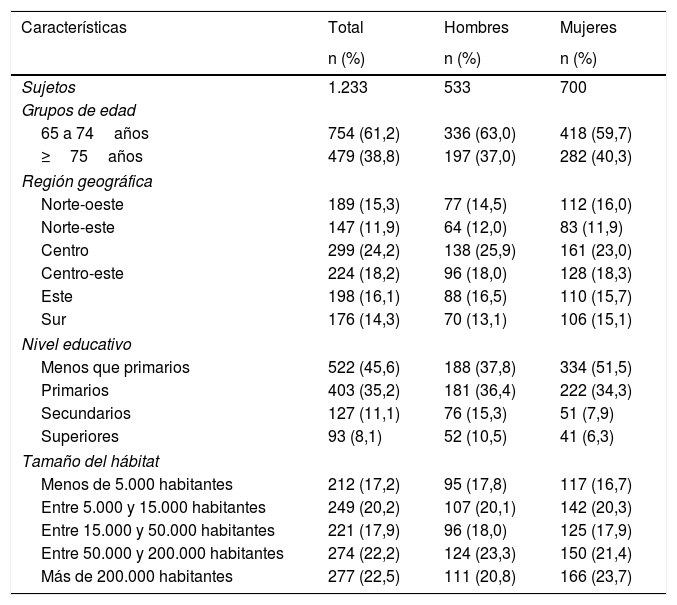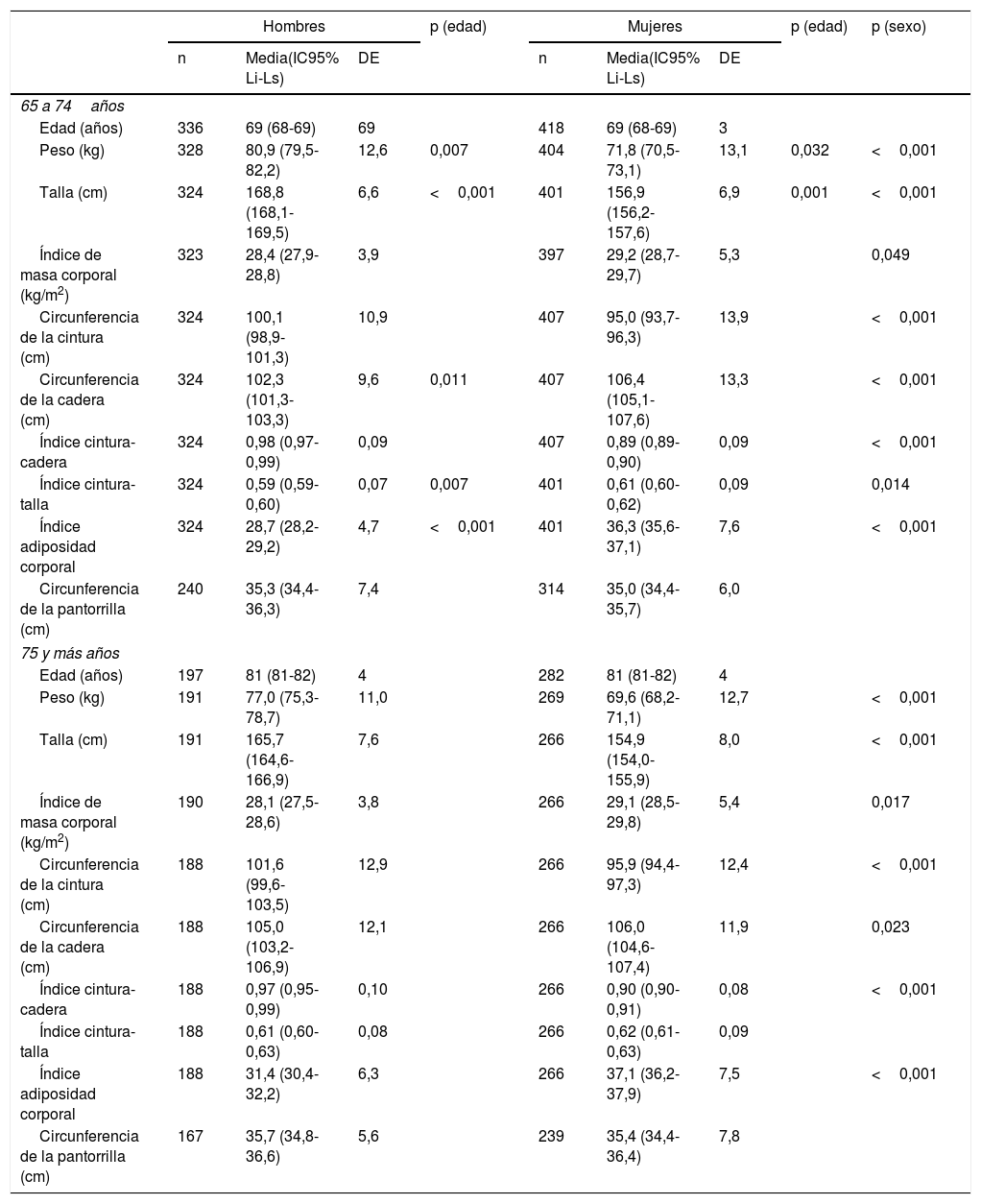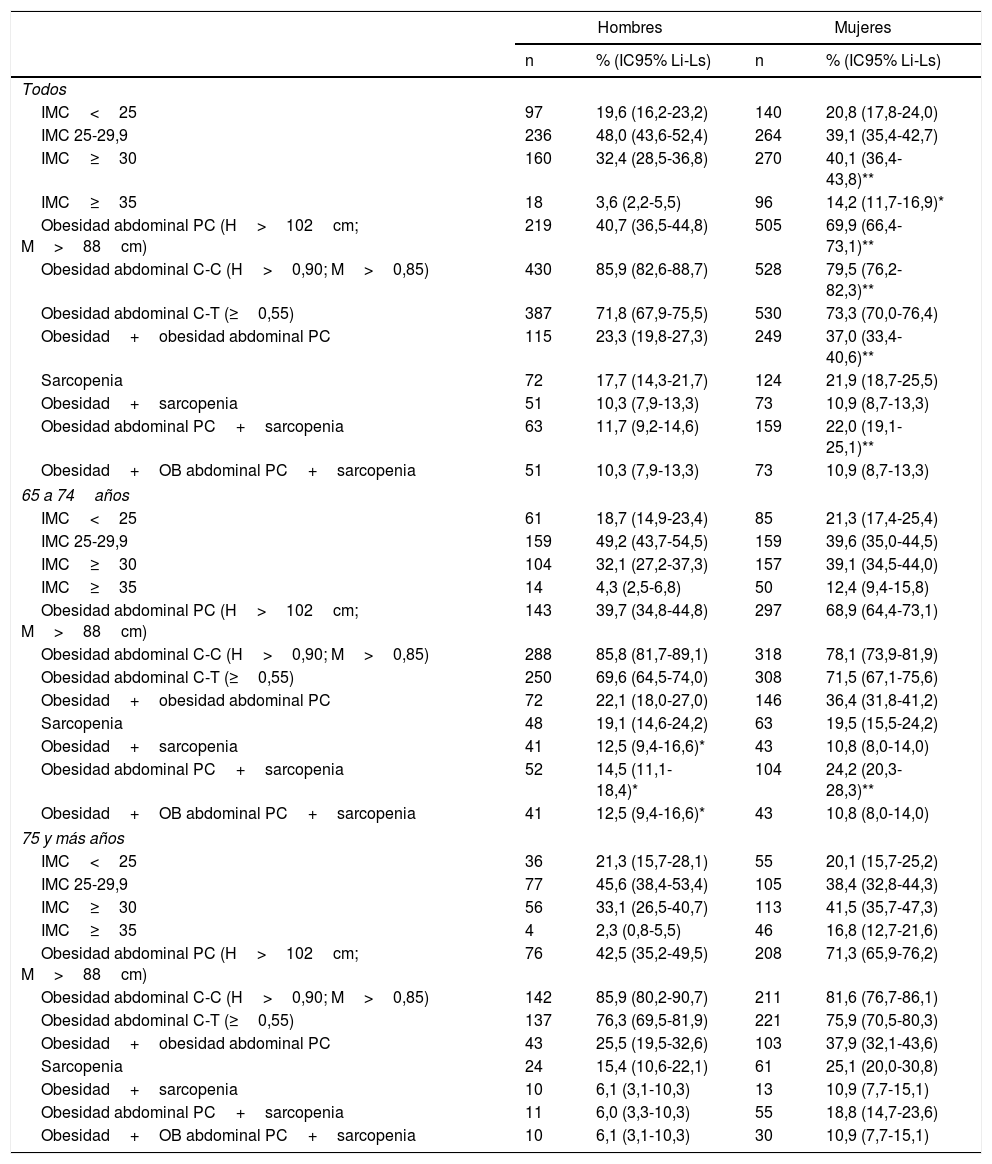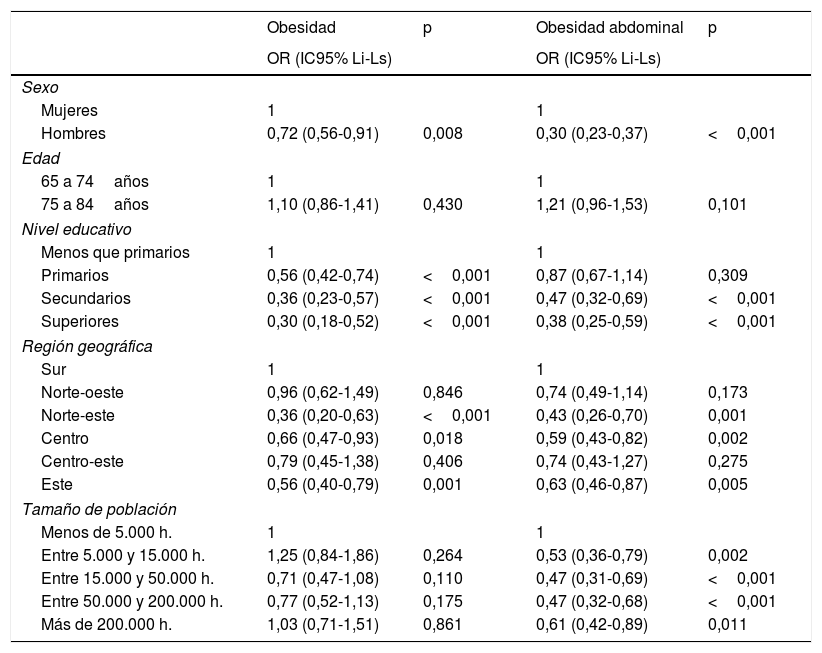Evaluar la prevalencia de obesidad y obesidad abdominal (OA) en población española ≥65años, analizar la influencia de algunos factores sociodemográficos y su asociación con factores de riesgo.
MétodosLa muestra procede del estudio ENPE, estudio transversal en muestra aleatoria representativa de la población no institucionalizada (2014-2015). Este análisis se refiere a población ≥65años (n=1.233). Observadores entrenados realizaron mediciones antropométricas en los domicilios según protocolos internacionales estandarizados. Se consideró obesidad (índice de masa corporal [IMC] ≥30); OA (cintura >102cm varones; >88cm mujeres).
ResultadosSe ha estimado una alta prevalencia de obesidad en adultos ≥65años, mayor en mujeres (40,1% [IC95% 36,4-43,8]) que en hombres (32,5% [IC95% 28,5-36,8]). La prevalencia de OA también es mayor en mujeres (69,9% [IC95% 66,4-73,1]) que en hombres (40,7% [IC95% 36,5-44,8]), y es aún mayor al definir OA considerando el índice cintura-cadera o el índice cintura-talla. El 39,8% de tipificados como OA tienen IMC entre 25-29. Obesidad y OA son más frecuentes en el sur respecto al este, norte-este y centro y tienen relación inversa con el nivel educativo. Obesidad y OA se asocian con mayor probabilidad de hipercolesterolemia e hipertensión arterial. La obesidad sarcopénica también se asocia, además, con diabetes.
ConclusiónLa prevalencia de obesidad y OA en adultos ≥65años es alta, mayor en mujeres, en personas con menor nivel educativo y en la región sur respecto al este, norte-este y centro. Es especialmente preocupante la alta prevalencia de OA por su asociación con complicaciones cardiovasculares, metabólicas y deterioro de la calidad de vida.
To assess the prevalence of obesity and abdominal obesity (AO) in the Spanish population aged ≥65 years, to analyse the influence of selected sociodemographic factors and association with risk factors.
MethodsThe sample comes from the ENPE study, a cross-sectional study of a representative sample of the non-institutionalized population (2014-2015). This analysis refers to the population ≥65 years (n=1,233). Trained observers performed anthropometric measurements at participants’ homes following standard international protocols. Obesity was defined as body mass index (BMI) ≥30; AO waist>102cm men; >88cm women.
ResultsEstimated prevalence of obesity in adults ≥65 years was high, higher in women (40.1% [95% CI 36.4-43.8]) than in men (32.5% [95% CI 28.5-36.8]). The prevalence of AO was also higher in women (69.9% [95% CI 66.4-73.1]) than in men (40.7% [95% CI 36.5-44.8]), and estimates were even higher when defining AO by waist-hip ratio or waist-height ratio. Of those classified as AO, 39.8% have a BMI between 25-29. Obesity and AO are higher in the South region compared to East, North-East and Central regions and showed inverse association with educational level. Obesity and AO were associated with increased probability of hypercholesterolaemia and high blood pressure, sarcopenic obesity, and diabetes.
ConclusionThe prevalence of obesity and AO in adults aged ≥65 years is high, higher in women, in people of lower educational level and in the South region compared to East, North-East and Central regions. The high prevalence of OA is especially worrying due to its association with cardiovascular and metabolic complications and poorer quality of life.












